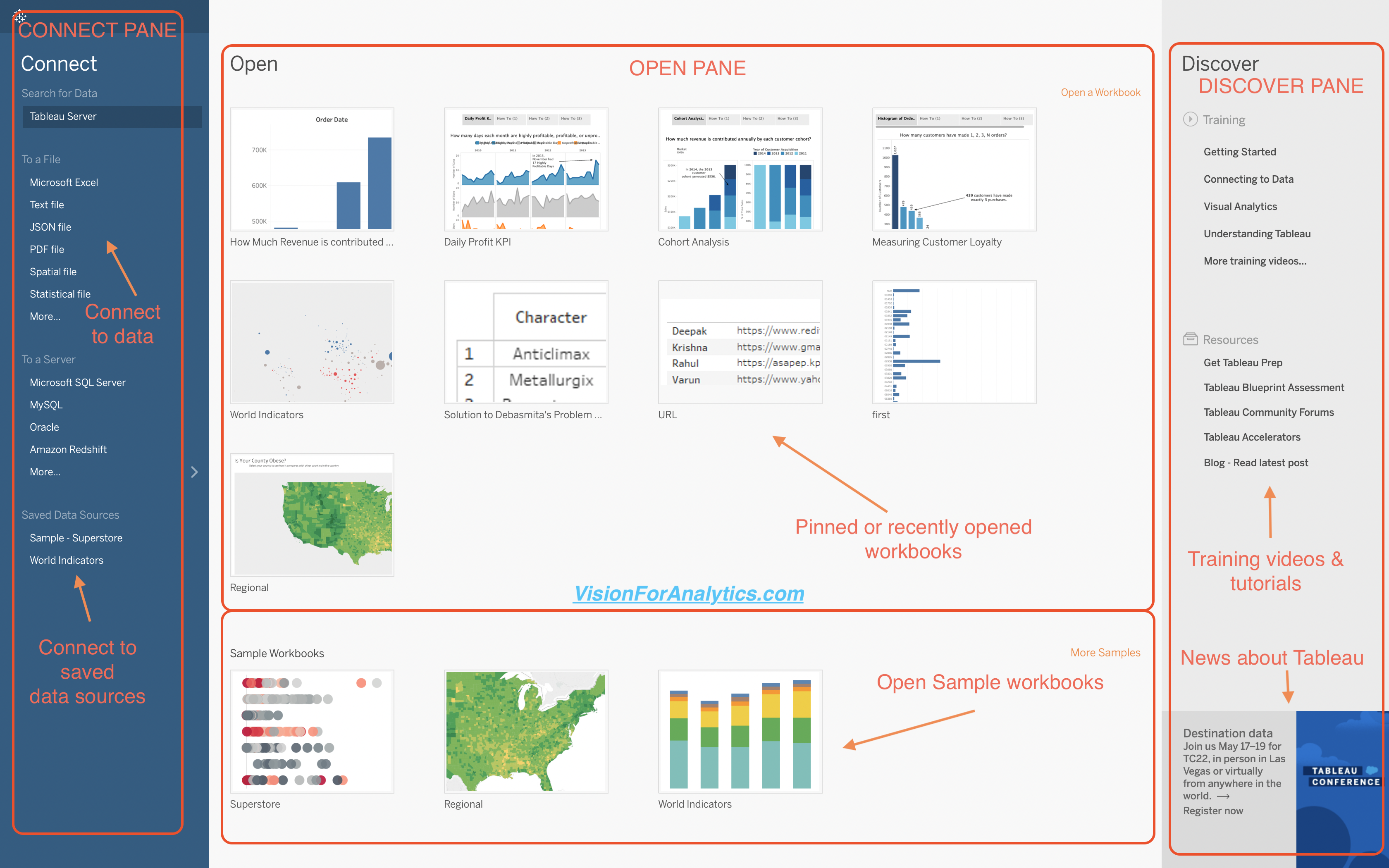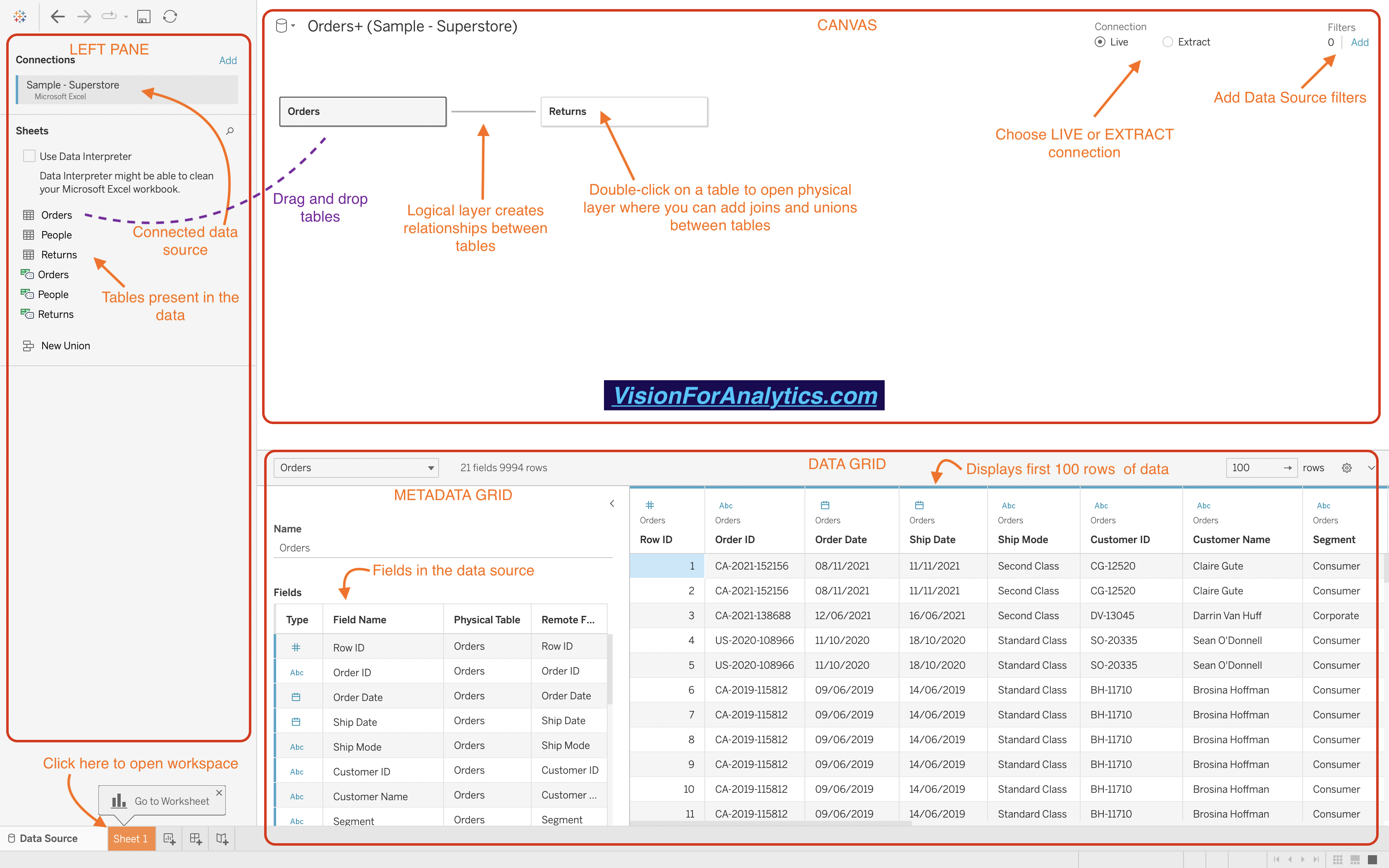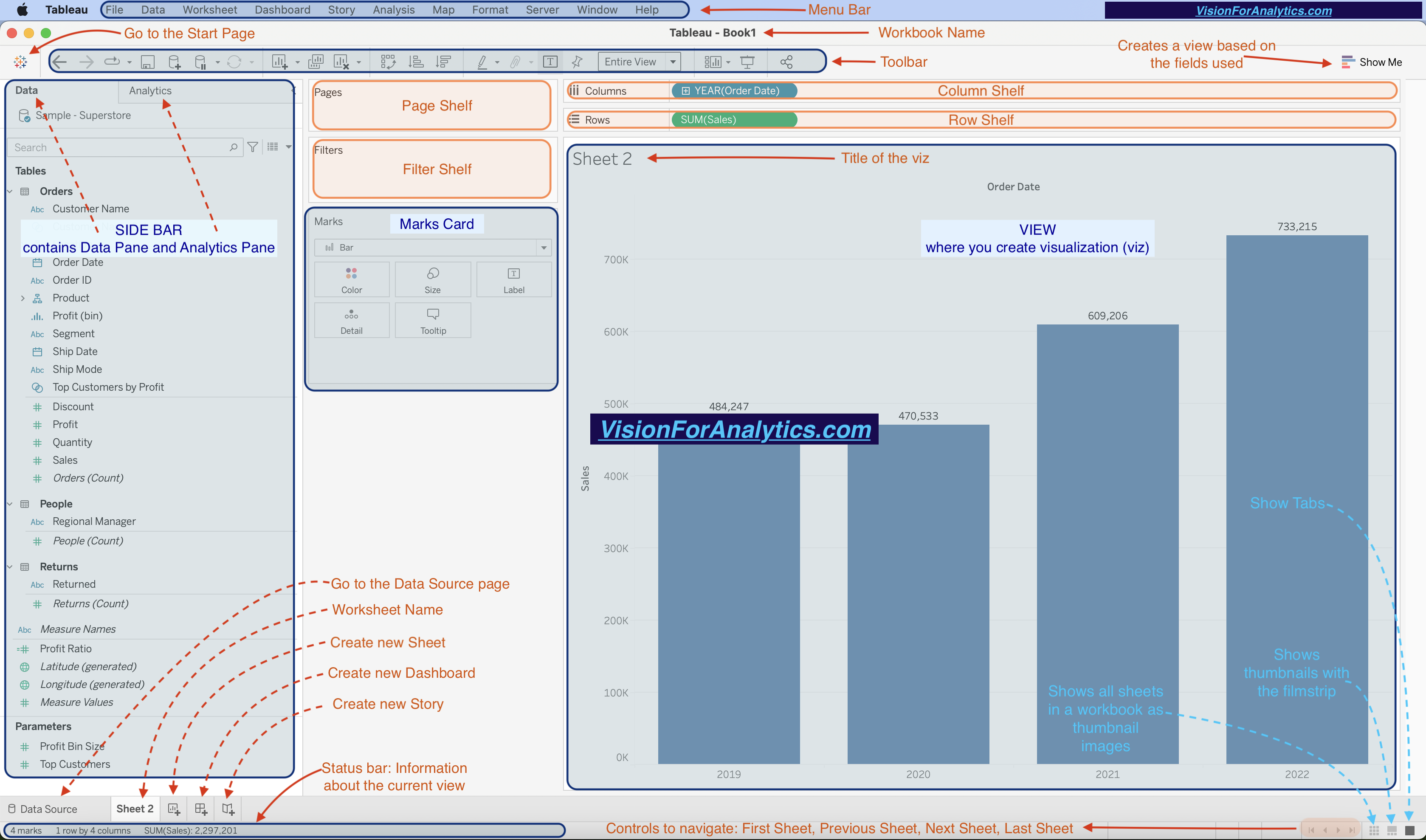Learn about Tableau Interface
In this page, you will get a comprehensive understanding of the Tableau Desktop interface.
You will learn about the start page, where you can start a new project, open an existing one or access recent workbooks.
Then, you will explore the data connection page, where you can connect to your data sources, import data, or set up a data connection.
Finally, you will learn about the workspace area, where you can build your visualizations, perform analysis, and create interactive dashboards.
Tableau can connect to hundreds of data sources. You can connect to a variety of data sources stored in a spreadsheet/text file, database, or cloud database sources such as Google Analytics, Salesforce, or Amazon Redshift.

Types of Connections:

- Live Connection: A direct connection to the data that updates in real-time. This is best to use when you want up-to-the-second changes in data. Performance may be slow if the database is not set up properly.
- Extract Connection: Compressed data stored locally and loaded into Tableau's in-memory data engine for fast performance. Use this when connecting to slow databases. You can bring in a portion of the data by clicking the "Edit" button, and refresh the data by clicking the "Refresh" button next to the "Edit" button.
- Choose 'Microsoft Excel' in the Connect Pane.
- Select the data source Excel file from the Open dialog box and then click "Open."
- Tableau opens the Data Source page once you have connected to the data source.

Information about your data, including field names, data types, aggregation, and display properties, is called "Metadata."
Metadata can be edited from the data grid.
- Change Data Role: Click on the data role icon and then select the new role type.
- Rename a Field: Select the dropdown menu on any field, select "Rename." Enter the new name and then click outside the field name.

You can customize connection information, metadata, and change aliases in Tableau Desktop. These changes are not applied to the underlying data source.
The following changes that you can apply in Tableau Desktop are saved in a Tableau data source (.tds) file:
- Dimension and Measure conversions
- Data type changes (e.g., dates, integers, strings)
- Field properties like default aggregation, sorting
- Changing of Field Names (Attributes)
- Folder structure
Folders: When there is a large number of fields in your data source, you can organize dimensions and measures into a folder structure.
Step 1: Click on the Data pane menu and select "Group by Folder".Step 2: Right-click any of the fields you want to add to the folder, go to "Folders" and select "Create Folder".
Step 3: Enter the relevant name in the "Create Folder" dialog box and then click OK.
Step 4: Drag the fields into the folder you wish to add. Dimensions to Measures/ Measures to Dimensions: Tableau automatically identifies whether your fields are dimensions or measures. You can reassgin a dimension as a measure or vice versa. For example, ID field which is numeric gets predicted as a measure and you can change it to be a discrete dimension. To change a dimension to measure, drag the dimension to the Measures area. Similarly, drag measure to the dimensions area to change a measure to a dimension.
Rename the fields:
Step 1: Right-click on the field and select "Rename".
Step 2: Enter the new name and press Enter.
Rename members in the field:
Step 1: Right-clik on the dimension and select aliases
Step 2:Select the Member you wish to edit in the Edit Aliases dialog box.
Step 3: Enter the new alias and then click OK.
